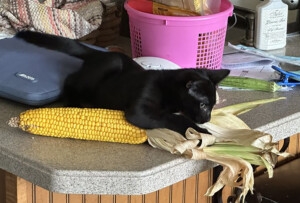The year was 1984. It was totally awesome. Ronald Reagan had just carried 49 states to win re-election. Purple Rain reigned over the air waves. Daniel-san had defeated Cobra Kai (well, for the first time). Steve Jobs introduced a little beige box that would soon change the world. Yet in farm country, one news item dominated all conversations from turnrows to coffee shops: Case buys International Harvester. Well, they sort of did.
Tenneco already owned Case. In a move to boost their ag footprint, Tenneco acquired an industry icon. IH loyalists were in disbelief. Many were livid. Others in sheer panic. How could this be? How could those ugly white-on-top-orange-on-the-
While it was a rocky start, all became well a few years later with the launch of the famous Magnum tractor. This was the first combined creation of the merger, offering breakthroughs in styling, comfort and the first full powershift transmission. In 1994, Tenneco exited the farm sector, a public offering formed the Case Corporation, and with it, the Case IH brand.
I was working on the business at a marketing firm at the time. I was sworn to secrecy while creating a launch event for their North American dealer meeting. I’ll never forget the deafening roar and tears of glee from the crowd when during our opening video they watched the word Case slide in from the left of the screen and met with the letters IH arriving from the right side of the screen to form the new Case IH brand identity. A huge part of our business was collateral development. We’re talking automotive-quality brochures with Detroit-style photography shot from lift cranes and helicopters. Immediately after the sales meeting, we were charged with revising all photos in current collateral, stripping out Case International for Case IH. While those revisions may sound simple enough today, they were anything but back in those days. Meanwhile, Case IH’s days of merging didn’t end when leg warmers and the multi-layering of Polo shirts did. In 1999 the company would be purchased by Italian automaker Fiat, which owned the New Holland brand of farm and construction equipment. The company is now CNH Industrial.
This month marks the 40th anniversary of ag’s most infamous merger. People often recount exactly where they were during defining historical events: JFK’s assignation, the Challenger explosion, 9-11. For this Illinois farm boy, it was in my parent’s basement, the social hub of news and gossip on Rural Route 3, where a group of stunned farmers – owners of red, green and those in between – gathered to not only process what just happened, but ask “what’s next?”
Related Posts

This Week in Ag #15
“Your rows sure are straight.” Those may have been the most pride-filling words I ever heard. They were first spoken to me by one of my landlords, Orville Larson, the spring after my dad passed away and all farming operations fell entirely on me. Orville made a habit of driving out to his farm to see

This Week in Ag #27
Just as the seasons inevitably turn, so does the farming landscape within a tight-knit rural community. That reality hit close to home for me last Thursday with the passing of my uncle, Gary Nichols. He and my father farmed together for decades, and like most farming families, Uncle Gary was a solid fixture in my life,

This Week in Ag #88
No month is more associated with a crop than October is with a certain orange orb. That’s why it’s #NationalPumpkinMonth. Pumpkins are the centerpiece of the booming $1.25 billion US agritourism industry. You-pick pumpkin patches are a main attraction, providing family photo opportunities young mothers love even more than their pumpkin spice lattes. Corn mazes, apple

